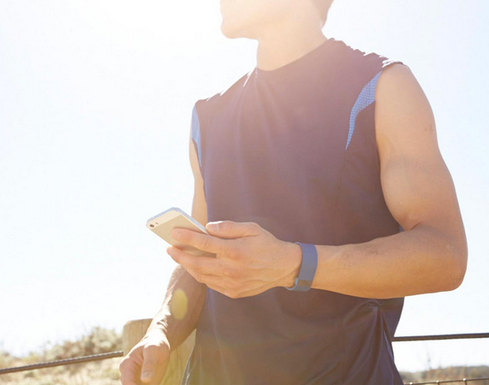Apple Watch Debuts At No. 2 In Wearables MarketApple Watch Debuts At No. 2 In Wearables Market
Apple sells 3.6 million smartwatches in its opening quarter, blasting past competitors Samsung, Garmin, and Xiaomi to consume 20% of the overall wearables market.


10 Cool Fitness Trackers That Aren't Apple Watch
10 Cool Fitness Trackers That Aren't Apple Watch (Click image for larger view and slideshow.)
Apple shipped six times more smartwatches than Samsung did during the second quarter of the year, landing the Apple Watch maker in second place behind wearables market leader Fitbit.
The entire category surged forward thanks to Apple's entry, which kickstarted wider interest in wearables.
Fitbit remains the world's biggest provider of wearables by volume, according to IDC. The company shipped about 4.4 million Fitbit fitness trackers, giving it 24.3% of the market. Fitbit enjoyed a 158% increase in shipments year-over-year.
Apple shipped 3.6 million Apple Watch units, says IDC, which puts the company just 800,000 units shy of Fitbit. The Apple Watch accounted for 19.9% of all wearables shipped during the second quarter of the year.
Moreover, IDC said the Apple Watch represented two out of every three smart wearables shipped during the quarter. (The distinction being the Apple Watch and other smart wearables can run apps. Fitness bands don't run apps.)
Apple did not confirm IDC's numbers, and has in the past said it will not share Apple Watch sales figures.
Analyst estimates made earlier this year pegged Apple's initial Watch sales between 2.85 and 5.7 million.
China's Xiaomi landed in third place with shipments of 3.1 million wearables and 17.1% of the market. Garmin was a distant fourth with shipments of 700,000 units and 3.9% of the market. Samsung shipped 600,000 wearables, giving it 3.3% of the market. Other providers (Jawbone, LG, Pebble, Sony, etc.) combined shipped a total of 5.7 million devices.
The broader market for wearables jumped 223.2% year-over-year, with total shipments of 18.1 million.
"Anytime Apple enters a new market, not only does it draw attention to itself, but to the market as a whole," Ramon Llamas, research manager for IDC's wearables team, wrote in the firm's Aug. 27 report. "Its participation benefits multiple players and platforms within the wearables ecosystem and ultimately drives total volumes higher. Apple also forces other vendors -- especially those that have been part of this market for multiple quarters -- to re-evaluate their products and experiences."
Apple's jump to second place is notable, but likely unsustainable.
Sales of the Apple Watch spiked the first few weeks the wearable was available, but trailed off quickly. The Watch may now be more widely available in retail stores (it was initially only available online), but many consumers still aren't convinced smartwatches are necessary. The real test of the Apple Watch's staying power in the market will be revealed in third quarter shipment numbers.
[Among the apps: Salesforce Demos Apple Watch Apps For Business.]
In the meantime, Apple's competitors aren't standing still.
Google recently updated the Android Wear platform with more features and gave developers more power over their apps. Hardware companies including Huawei, Motorola, and Samsung are all expected to show off new wearables at the IFA trade show in Berlin next month.
About the Author
You May Also Like






